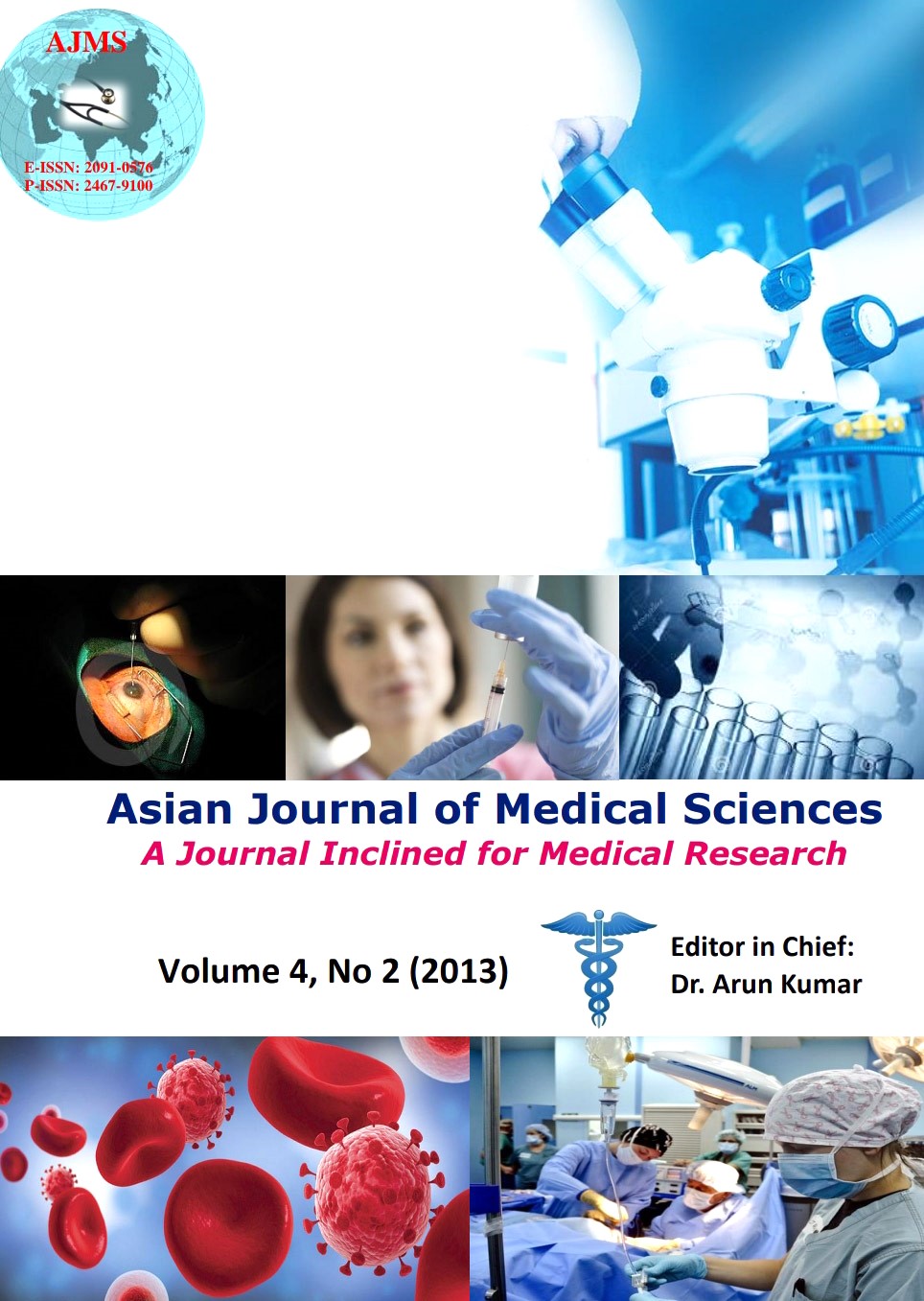A correlative study of uric acid with lipid profile
Keywords:
Uric acid, total cholesterol, triglycerides, HDL, LDL, CVDAbstract
Objective: the study was conducted to verify the association of hyperuricemia with lipid profile in a group of Assamese people so as to take necessary precautions from developing future cardiovascular disease (CVD).
Methods: lipid profile (total cholesterol, triglycerides, HDL and LDL) were estimated in sixty hyperuricemic Assamese people who had no previous history of CVD to ascertain the pattern of their association between uric acid and lipid profile if any.
Results: The study proves a significant positive correlation (p < 0.005) between uric acid and TC, TG and LDL, and a significant negative correlation (p < 0.005) between uric acid and HDL.
Conclusion: The study thus shows that hyperuricemia is associated with dyslipidemia which may predispose to future CVD. So treating such subject for hyperuricemia and dyslipidemia can very well reduce cardiovascular morbidity.
DOI: http://dx.doi.org/10.3126/ajms.v4i2.7893
Asian Journal of Medical Sciences 4(2013) 8-14
Downloads
Downloads
Published
How to Cite
Issue
Section
License
Authors who publish with this journal agree to the following terms:
- The journal holds copyright and publishes the work under a Creative Commons CC-BY-NC license that permits use, distribution and reprduction in any medium, provided the original work is properly cited and is not used for commercial purposes. The journal should be recognised as the original publisher of this work.
- Authors are able to enter into separate, additional contractual arrangements for the non-exclusive distribution of the journal's published version of the work (e.g., post it to an institutional repository or publish it in a book), with an acknowledgement of its initial publication in this journal.
- Authors are permitted and encouraged to post their work online (e.g., in institutional repositories or on their website) prior to and during the submission process, as it can lead to productive exchanges, as well as earlier and greater citation of published work (See The Effect of Open Access).




